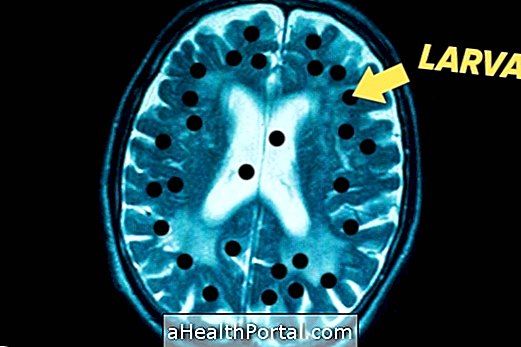Mastoiditis is an inflammation of the mastoid bone, which is located prominently behind the ear, and is most common in children under 2 years of age, although it can reach people of all age groups. Mastoiditis usually occurs due to a complication of otitis media, when the microorganisms that cause the infection spread beyond the ear to the bone.
Infection of the mastoid causes an intense inflammation in the bone, which causes redness, swelling and pain around the ear, in addition to fever and discharge from purulent secretion. In the case of symptoms that indicate mastoiditis, it is necessary the evaluation by the general practitioner or otorrino, so that the treatment with antibiotics is initiated as soon as possible, avoiding complications like formation of abscess and destruction of the bone.

Main symptoms
The most common symptoms of mastoiditis include:
- Persistent, throbbing pain in the ear and region around the ear;
- Redness and swelling in the region behind the ear;
- Formation of a lump behind the ear, similar to a lump, which may be confused with other causes. Find out what are the main causes of lump behind the ear;
- Fever;
- Yellow discharge from the ear;
- There may be a gradual decrease in auditory capacity, both due to the accumulation of secretion, as well as the involvement of the eardrum and other structures responsible for hearing.
Acute mastoiditis is the most common form of presentation; however, it also develops the chronic form, which has a slower evolution and milder symptoms.
To confirm the diagnosis, the physician should evaluate the symptoms, examine the ear and, if necessary, request imaging tests such as radiography or CT scan. In addition, samples of ear secretion may be collected to identify the bacteria that causes the infection.
What are the causes
Mastoiditis usually results from acute otitis media that has not been treated or that has been treated incorrectly, which can happen by using the wrong doses, discontinuing use before the time indicated or when the antibiotic used is not sufficient to eliminate the microorganism for example.
The microorganisms that most often cause this type of infection are Pneumococus, Haemophilus influenzae, Staphylococcus pyogenes, Pseudomonas aeroginosa, among other bacteria, which are able to spread from the ear to the bone.

How is the treatment done?
The treatment of mastoiditis is otolaryngologist-oriented, and is usually done with intravenous or oral antibiotics such as Ceftriaxone or Ciprofloxacin, for example for about 2 weeks.
If there is abscess formation or if there is no clinical improvement with the use of antibiotics, drainage of the secretion may be indicated through a procedure called myringotomy or, in more severe cases, mastoid opening may be necessary.
Possible Complications
Very serious or incorrectly treated mastoiditis can cause:
- Deafness;
- Meningitis;
- Brain abscesses;
- Infection spread through the blood, known as sepsis.
When it causes complications, it means that mastoiditis is very serious and requires rapid hospital treatment, otherwise it may even cause death.
























